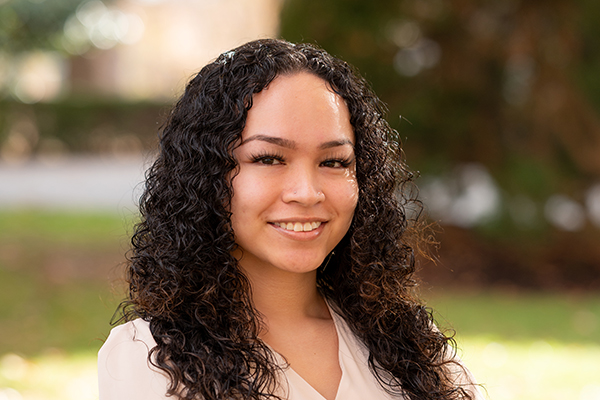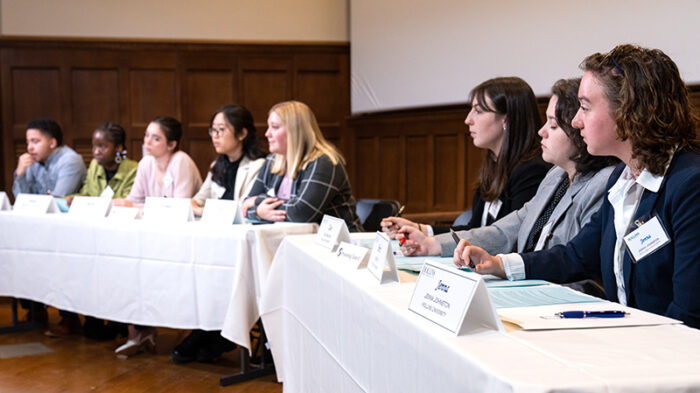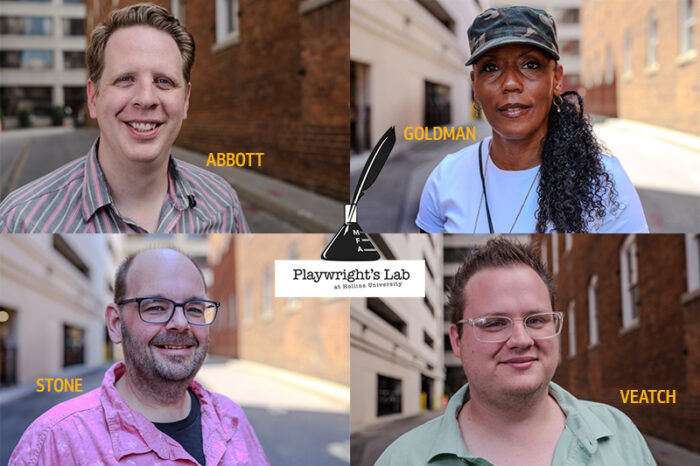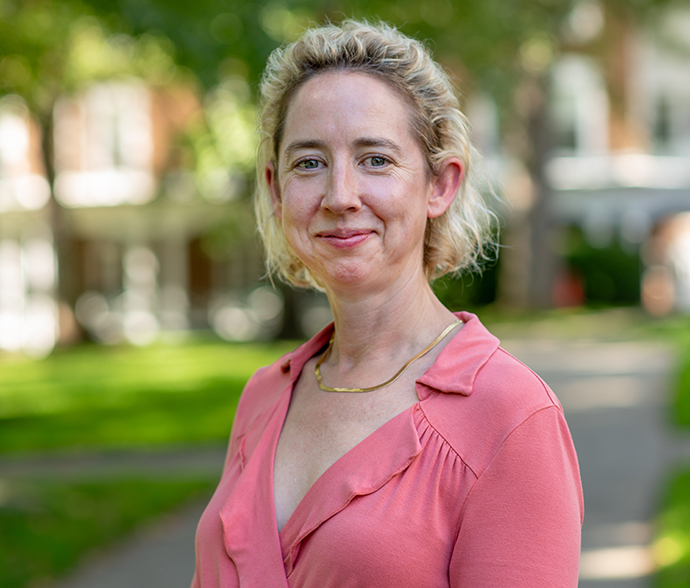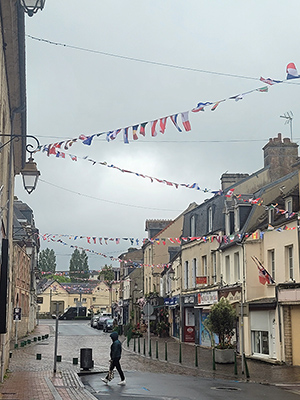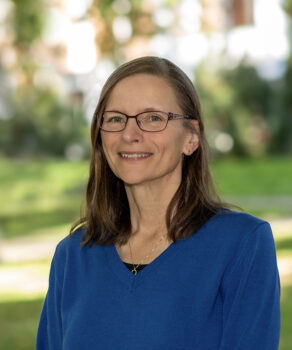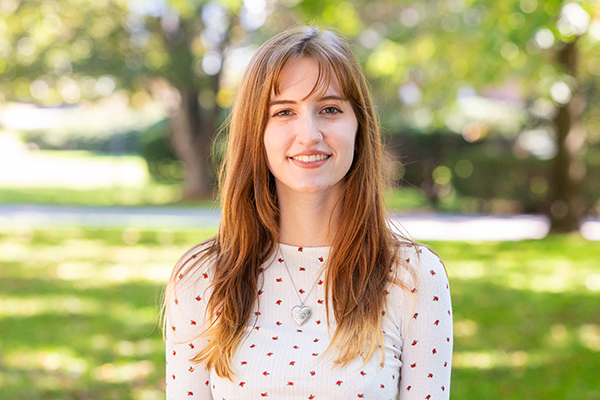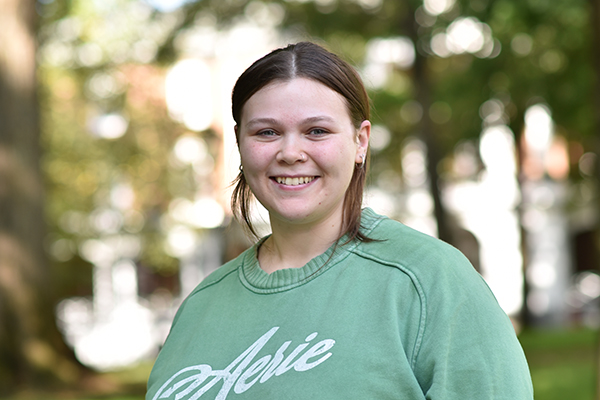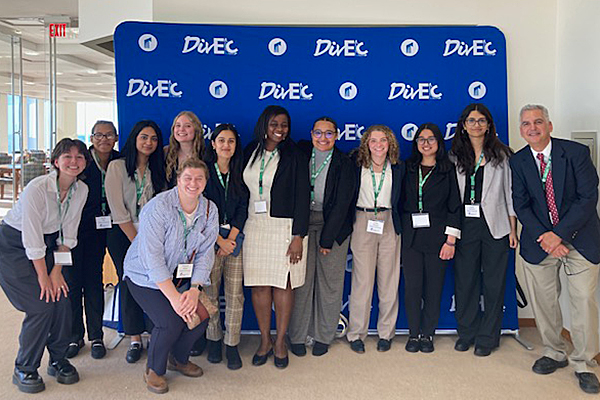A naturally occurring substance commonly found in the eyes, joints, and skin, hyaluronic acid offers major benefits throughout the human body.
As the Cleveland Clinic notes, “It helps things move smoothly, helping joints work like a well-oiled machine and preventing pain and injury from bones grinding against each other. It helps keep things hydrated and is often used for treating dry eyes and boosting moisturizing creams, lotions, ointments, and serums. It makes your skin flexible, helping wounds heal faster.” Many pathological conditions are correlated to altered hyaluronic acid levels.
Working this summer in the Department of Molecular Physiology and Biological Physics at the University of Virginia (UVA), Dionne Torres ’24 undertook a key role in investigating the protein, hyaluronan synthase 1, that produces hyaluronic acid. “The lab that I worked in had previously solved the structure for a viral homologue of hyaluronan synthase,” she explains. “The viral homologue, however, produces shorter chains of hyaluronic acid than the vertebrate homologue found in humans. My project this summer was utilizing nanobodies to characterize a vertebrate homologue of hyaluronan synthase, the Xenopus Leavis Hyaluronan Synthase 1 (X1-HAS-1) from the African clawed frog.”
A biochemistry major and biology minor at Hollins, Torres spent ten weeks in UVA’s Summer Research Internship Program (SRIP), which welcomes qualified undergraduates who are interested in pursuing biomedical research. According to the SRIP webpage, “This program supports (though it is not limited to) racially and ethnically diverse and first-generation undergraduate students in their junior and senior years, aiming to expose them to laboratory research and familiarize them with the types of careers within biomedical sciences.”
Torres initially considered studying environmental science when she arrived at Hollins and in the spring of her first year on campus, she took one of the major’s prerequisite courses, General Chemistry, which had a lab component in addition to classroom work. “That’s where I really fell in love with chemistry,” she recalls. “It was really satisfying to conduct successful experiments and learn more about the scientific method. I liked the exploration and the application of techniques. It’s one thing to learn something in class, but to be able to apply it in an experimental or laboratory setting makes it so much more real and exciting.”
At one point, the class engaged in an experiment involving bioluminescence, an activity that was particularly impactful to Torres. “I told my Gen Chem teacher, ‘I really liked that. It was beautiful.’ She asked if I was a chemistry major, and I said, ‘I can be!’”
By her junior year, Torres had decided that she wanted to attend pharmacy school. “As I progressed further into my degree in chemistry, I was exposed to healthcare in my science classes, and I was drawn specifically to pharmaceutical science,” she explained. “I learned about buffer systems in the body in my analytical chemistry class and that penicillin was the first antibiotic derived from fungi in microbiology.” While preparing for pharmacy school, Torres recognized that she needed to bolster her research experience. Assistant Professor of Physics Brian Gentry, who is also Hollins’ premed advisor, suggested to her that the best way to gain experience was through an internship. After exploring different opportunities, Torres was drawn to SRIP at UVA.
“I became interested in the program because of its structure. You work under a Ph.D. student, and you perform your own independent research project. While doing that, you also have access to seminars and resources that prepare you for graduate school.”
Torres was admitted to SRIP as part of a cohort of just 38 students out of 400 applicants from all over the country. “It was a refreshing experience to meet people from schools like Vanderbilt and Dartmouth, gain different perspectives, and learn more about what they want to do. You had people from all different walks of life with different ambitions. I met people who wanted to be medical doctors, physician assistants, physical therapists, and people who knew they wanted to pursue Ph.D. programs. The one thing that we all had in common was that we had a passion for science. The environment was stimulating, and it opened my eyes to different fields of research within healthcare.”
With SRIP emphasizing hands-on work, Torres also came away with invaluable technical skills: “For example, I can confidently put on my resume that I know how to culture bacteria, purify proteins, and perform biochemical analyses. I became familiar with various laboratory equipment as well.”
In addition to acquiring research experience, Torres feels she benefited from a number of mentorships. “My internship was funded by the American Society for Pharmaceutical Engineering and Technology (ASPET), and I attended ASPET seminars where they had presentations about pharmaceutical research and pharmacology. We also had access to workshops on everything from preparing for the GRE to the graduate school application process and interview preparation to coding bootcamps. It was a well-rounded educational experience.”
Torres, who hails from Saipan, the largest of the Northern Mariana Islands, has begun applying to pharmacy schools and is interviewing with the University of Florida School of Pharmacy this month. She says the SRIP experience has given her the confidence to go on and possibly pursue a dual PharmD/Ph.D. degree program with a Ph.D. in either pharmaceutical sciences or public health. “At first, I didn’t think I wanted to do a Ph.D., but I found the work to be vigorous and very exciting. I gained invaluable insight into the life of a Ph.D. student and being able to work on your own independent project on your own time. It was intense, but it did not deter me from pursuing research.”
During January Short Term and Spring Term 2024, Torres plans to enhance her research portfolio through her senior thesis. “I’m trying to find a thesis project that’s a blend of chemistry and possibly public health. I learned through SRIP that having a project that you have intellectual ownership of will strengthen my application. I’m excited to bring together the two worlds that I am interested in.”
Based on her experience, Torres enthusiastically offers encouragement to STEM majors who are interested in or are pursuing research internships. “Prior to the SRIP program, I didn’t have any research experience, and neither did the majority of those in my cohort. I was afraid I would be rejected due to my lack of research experience, but I was not. Don’t be afraid to put yourself out there and apply for an internship, whether it’s at UVA or anywhere else, because you never know where it can lead you. It led me to a really great place, and I walked away from the program with many new academic, personal, and professional skills.”
Torres thanks her mentors, Assistant Professor of Physics Brian Gentry, Assistant Professor of Chemistry Son Nguyen, Assistant Professor of Biology and Environmental Science Mary Jane Carmichael, and Professor of Chemistry Daniel Derringer, for their unwavering encouragement and support, as well as Johnice Brown and Adriane Halme of UVA for the opportunity to work under SRIP.



